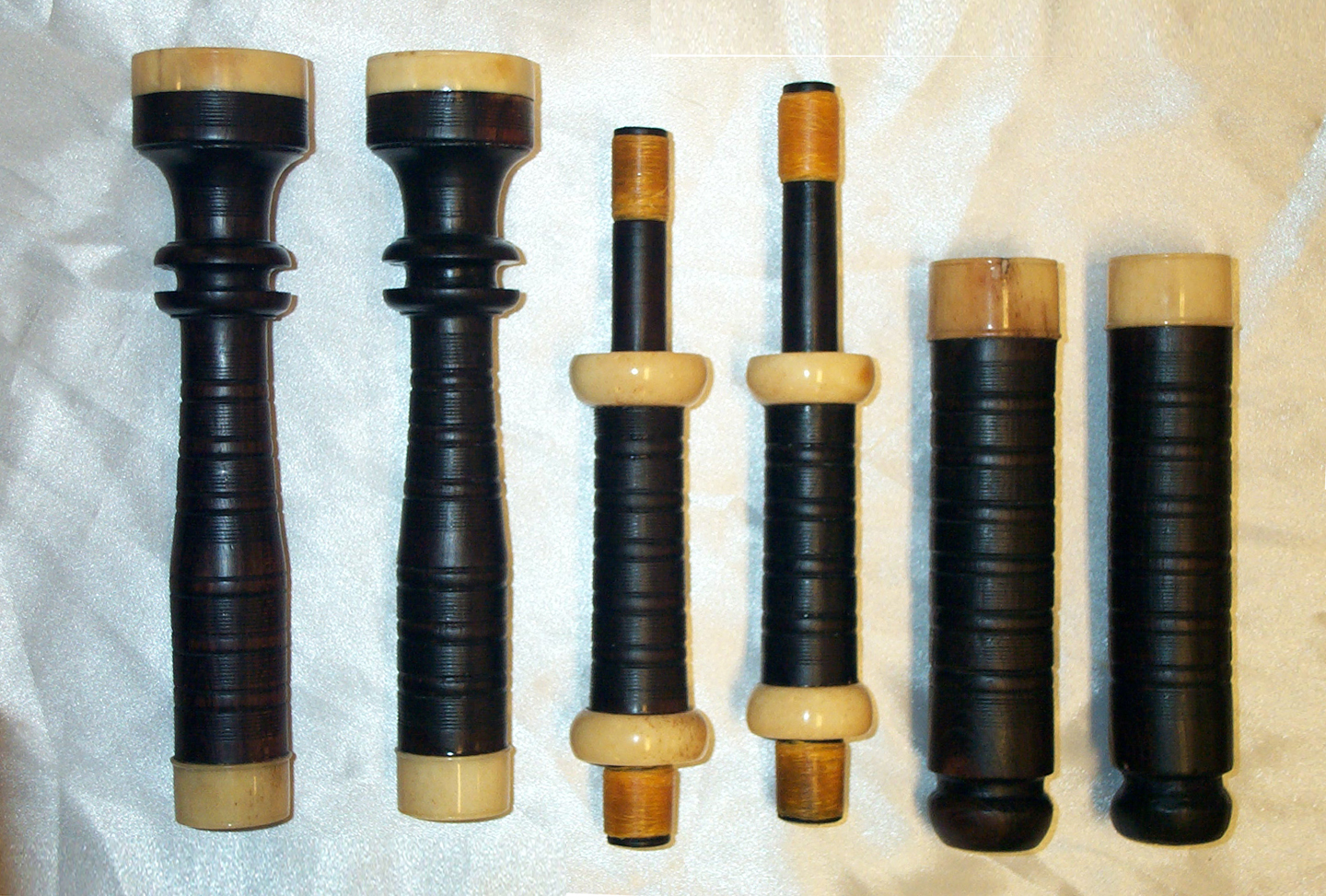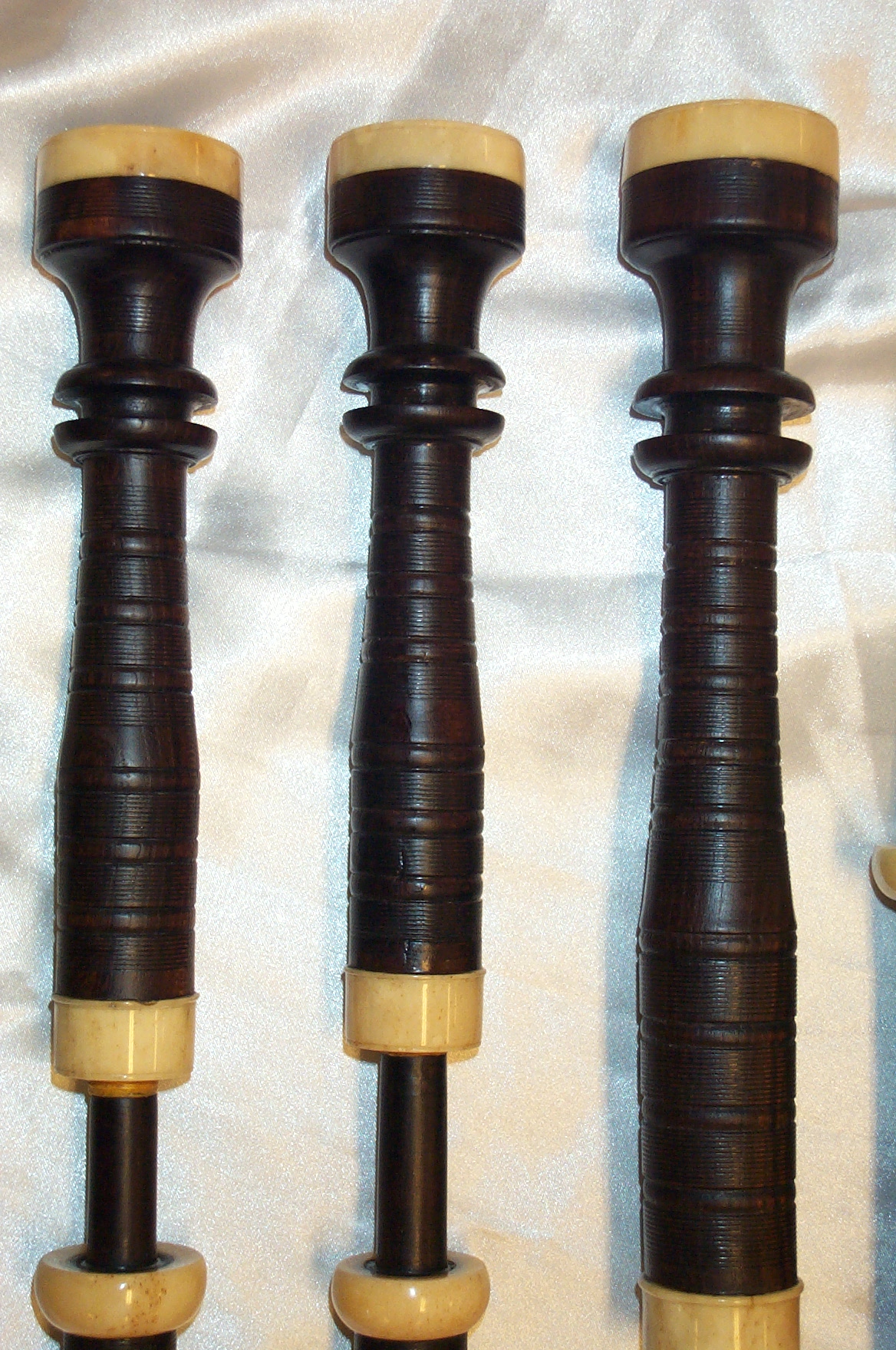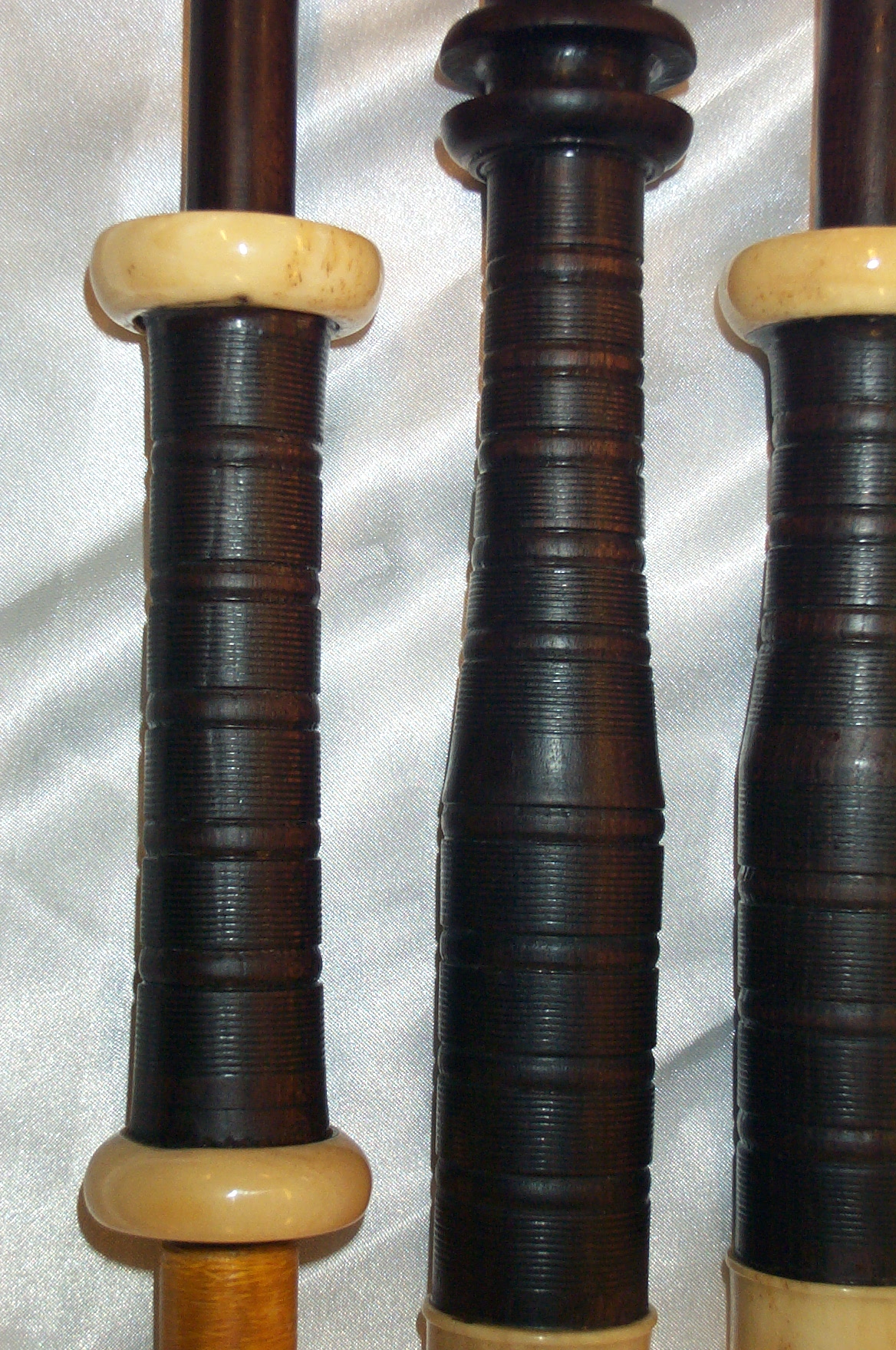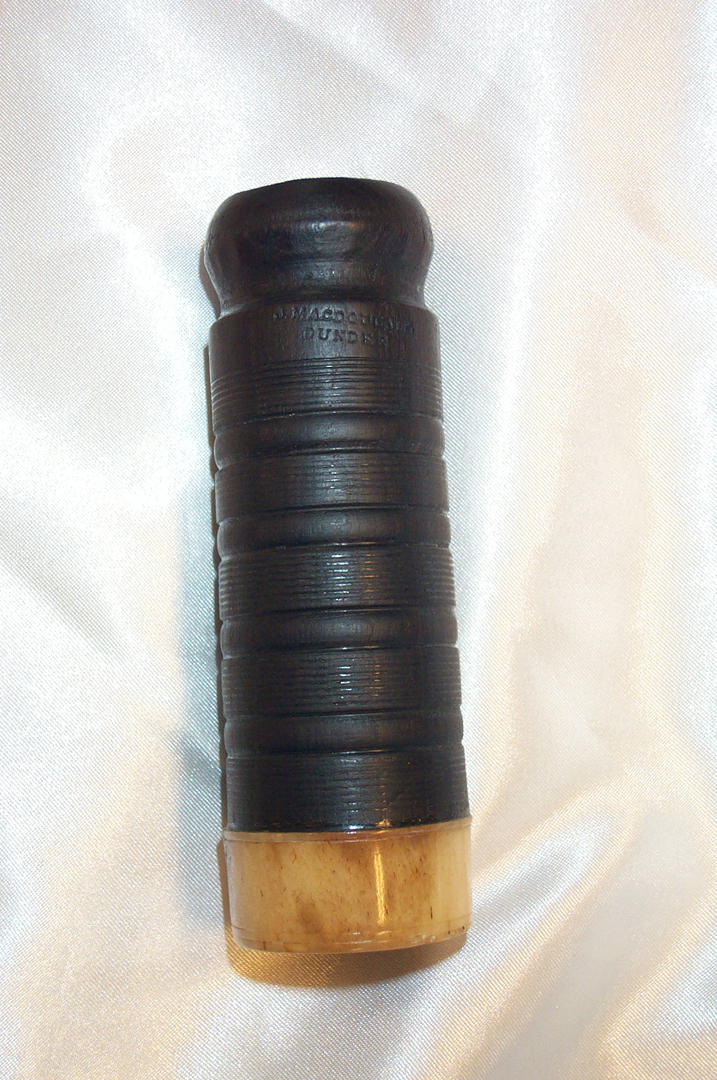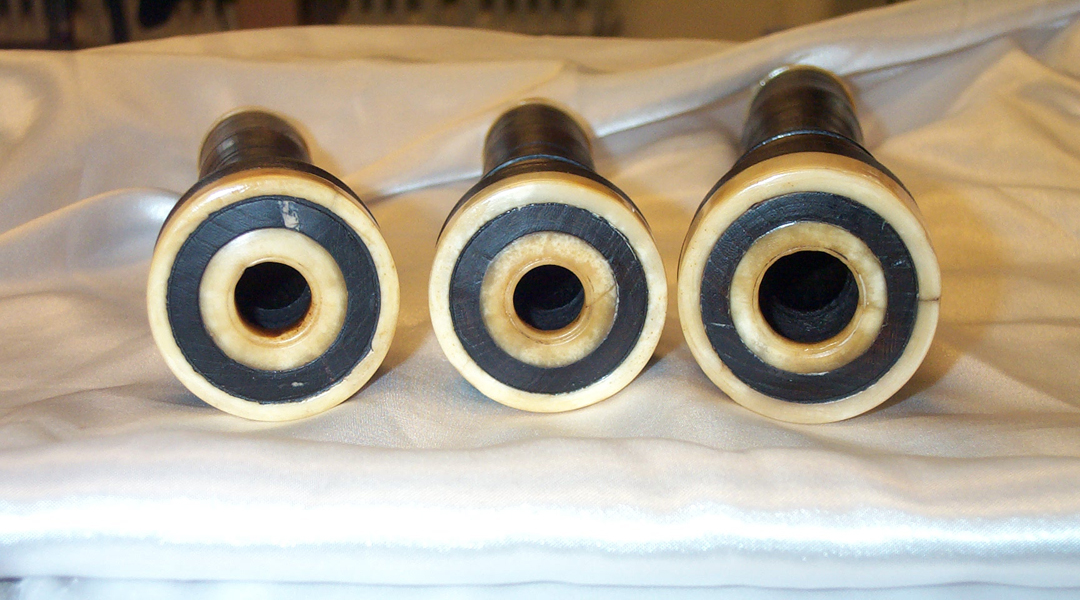This bagpipe opens a book of questions. The chanter stock is stamped J. MacDougall Dundee. It is made of Laburnum and marine ivory and the style suggests it was made 1820's - 1830's. We know that the MacDougalls made bagpipes in Perth, Edinburgh, and Aberfeldy however prior to this bagpipe surfacing there was no information regarding a MacDougall making bagpipes in Dundee.
We do know that Allan MacDougall made bagpipes in Perth around 1790 and that his son, John, was born in 1802. John would have been 18 years old if there is a connection between this bagpipe and the MacDougalls we are most familiar with.
We know that John was a "wright" meaning a wheel wright or a cart wright. Perhaps at a young age he set out to make his fortune and settled in Dundee for a spell. Perhaps he made a few bagpipes during those years before returning home to continue his father's business.
This is entirely speculation however what struck me about this bagpipe was the "Thow" look of it. Of course, we know that John Thow lived in Dundee and began making bagpipes commercially in 1853 at the age of forty. In 1834 he would have been 21 years old. We know that in 1850 he is listed as a wright in the Dundee trade directories.
Is it possible that John MacDougall and John Thow had contact (as wrights) in the 1820's and or 1830's? Is it possible that John Thow learned bagpipe making skills from Duncan MacDougall? I don't know the answers to these questions however it does give one reason to ponder.
We do know that Allan MacDougall made bagpipes in Perth around 1790 and that his son, John, was born in 1802. John would have been 18 years old if there is a connection between this bagpipe and the MacDougalls we are most familiar with.
We know that John was a "wright" meaning a wheel wright or a cart wright. Perhaps at a young age he set out to make his fortune and settled in Dundee for a spell. Perhaps he made a few bagpipes during those years before returning home to continue his father's business.
This is entirely speculation however what struck me about this bagpipe was the "Thow" look of it. Of course, we know that John Thow lived in Dundee and began making bagpipes commercially in 1853 at the age of forty. In 1834 he would have been 21 years old. We know that in 1850 he is listed as a wright in the Dundee trade directories.
Is it possible that John MacDougall and John Thow had contact (as wrights) in the 1820's and or 1830's? Is it possible that John Thow learned bagpipe making skills from Duncan MacDougall? I don't know the answers to these questions however it does give one reason to ponder.
J MacDougall, Dundee - ca 1820-1830

